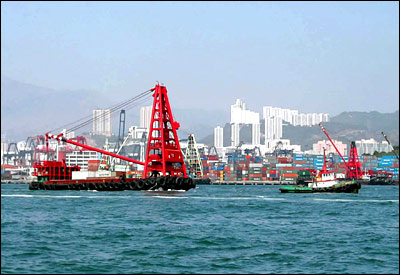The construction of China's coastal ports focuses on transportation systems for coal, containers, iron ore imports, grain, RORO operations between mainland and islands, and deep-water access to the sea - in particular, strengthening container transport systems. The government concentrated on the construction of a group of deep-water container wharves at Dalian, Tianjin, Qingdao, Shanghai, Ningbo, Xiamen and Shenzhen, and thus laid the foundation for China's container hubs. The coal transportation system has been further strengthened with the construction of a number of coal loading and unloading wharves. In addition, wharves handling crude oil and iron ore imports have been reconstructed and expanded. By the end of 2005, China's coastal ports have had over 2,500 berths of medium size or above, of which 1,030 were 10,000-ton-class berths; their handling capacity was 75 million standard containers a year, ranking first in the world for the third year running.

China has ten ports whose freight volumes exceed 100 million tons a year. The ports of Shanghai, Shenzhen, Qingdao, Tianjin, Guangzhou, Xiamen, Ningbo and Dalian are listed among the world’s top 50 container ports. Shanghai Port was the largest port in the world, as its freight volume in 2005 reached 443 million tons, exceeding Singapore Port for the first time.

